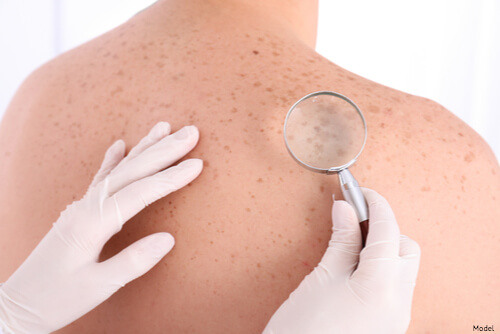At The Clinic for Dermatology & Wellness, we have noticed people avoiding trips to the doctor for skin concerns since the pandemic began. As a result, the patients we see coming in have more serious skin concerns than they should for a first appointment.
When it comes to letting your dermatology appointments slide, one of the biggest risks is skin cancer. One in 5 Americans will develop skin cancer by the age of 70, and the risk of skin cancers like melanoma increases from repeated sunburns. This is why it is our team’s mission to help prevent and fight skin cancer with the utmost skill and innovative technology. One of the best ways to prevent skin cancer or achieve an early diagnosis is by sharing as much knowledge and skin cancer facts with you as we possibly can. After all, when you know more, you’re better able to take good care of yourself!
With your health and well-being in mind, we want to share 3 facts you may not have known about skin cancer:
1. Having 5 or more sunburns doubles your risk for melanoma.
The vast majority of melanoma cases are directly related to UV radiation exposure from the sun. In fact, just one blistering sunburn in childhood or adolescence more than doubles a person’s risk of developing melanoma later in life. No matter what stage of life you’re in, it is always essential to practice diligent sun protection, including the regular application of sunscreen, SPF 30 or higher. This is true not only in the summer but year-round, regardless of whether it is sunny, cloudy, raining, or snowing. You can learn more about preventing melanoma in our related blog post.
2. When detected early, we can effectively treat precancerous lesions.
Precancerous lesions (also known as actinic keratoses) can be detected in our office with the use of photodynamic therapy (PDT). Photodynamic therapy uses a photosensitizing agent (aminolevulinic acid, or ALA) and a light source (Blu-U) to treat a wide range of skin conditions, including precancerous lesions.
For precancerous lesions, ALA is applied to the skin and allowed to incubate for the prescribed amount of time, depending on the treatment area. Once the ALA is absorbed by the precancerous cells, a photochemical reaction occurs, converting ALA into a light-sensitive agent. The target cells then have “time bombs” inside, primed for activation by light. At this point, the Blu-U light is applied to the treatment area, activating the medication.
While our patients experience amazing results with PDT, it is very important to strictly avoid light for 48 hours after treatment.
3. Non-melanoma skin cancers (NMSC) are far more common than melanoma.
Two of the most common kinds of skin cancers are basal cell carcinoma (BCC) and squamous cell carcinoma (SCC).
BCC is the most common form of cancer in the United States. Most patients see their dermatologist after developing a new skin-colored or shiny bump, or a pimple that won’t go away. In advanced stages, a basal cell will begin to eat away at the skin (ulcerate) as it extends to the deeper skin structures.
SCC is typically described as a rough, red, scaly patch of skin which never heals. Some people describe squamous cell lesions as being tender. While basal cell and squamous cell are rarely deadly, both can invade your skin and deeper tissues, leading to significant disfigurement, or spread to other areas of the body (typically squamous cell) if left untreated for many years.
Schedule Your Skin Checkup
With this information on skin cancer prevention, treatment and what to look out for, we hope you’re feeling more confident about achieving or maintaining healthy skin. We encourage you to schedule a consultation with our expert team if you have any questions or concerns! We are here to help, so call (541) 200-2777 today or request an appointment online.
